Homesteading April to-do List
This homesteading April to-do list is a helpful way to stay on track with what needs to be done. Having a plan for each month of the year can help you stay on top of your project list and remove some of the stress of having too much to do.
We love homesteading tips that help you break things down month by month, giving you a plan you can follow year-round.
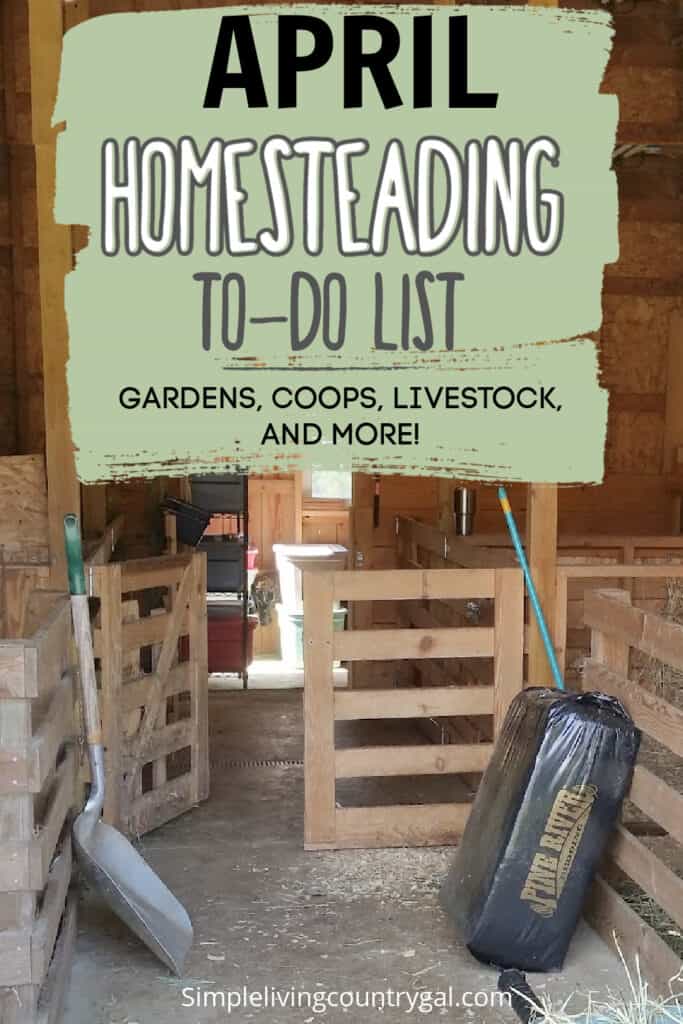
Homesteading is a great way to live a self-sufficient lifestyle, and every year, it gets more and more popular among folks of every age. It encourages self-sufficiency and independence, allowing you to rely less on the stores. The older I get the more I enjoy being a homesteader because the food I eat is healthier, the work I do is more enjoyable, and the skills I learn I can pass on to my kids and grandkids.
Staying on top of everything that needs to be done can be overwhelming, and that is why I rely on our monthly lists so much. Each month, I focus on the list, ensuring that all areas of our setup get the attention needed, leaving nothing random to fall through the cracks.
Importance of Having a Monthly To-Do List
Having a monthly to-do list in homesteading is a great way to be efficient without being overwhelmed. It allows you to plan better because you will use the year and the weather to decide what project belongs where. Here are a few more reasons why we love monthly planning!
- It helps balance the workload, spreading things out more evenly.
- It gives you time to gather supplies, enlist help, and save money as needed.
- It keeps you on track with timely chores such as breeding, ordering new chicks, or planting a garden.
- Finally, checking off tasks from a to-do list is therapeutic and my favorite part of list-making.
Be sure to grab the FREE April Homestead to-do list below!
Homestead Tasks for April
For us, April is the start of spring, and that means the busy season is officially here. Every area needs at least some attention as we prepare for kidding, planting, and chicks.
Let’s break things down by the most common areas found on a homestead. Jump to the sections that pertain to your setup for an actionable list for April.
Garden April To-Do List
April is go-time for gardeners, especially those of us who live in the northern states. The ground is finally workable, and that means soil prep is underway.
#1. Spring Clean Up
Remove any debris that gathered over the winter, as well as any plants that are leftover from the last growing season. If you find any rocks, roots, or branches, get them out as well. Break up any large clumps of soil and use a rake to smooth things out.
If it is dry enough, use a rototiller to work the till ground to loosen up any compact dirt. If you find the soil is too wet you can save this task for later in the month.
#2. Soil Test
Testing the soil each spring will help you understand the nutrient content and pH levels; this is your starting point for getting the ground ready to plant in. You can use a store-purchased test like this one, or take a sample to your local extension office for a more in-depth test. Once you have your results, you can add what is needed to the soil to help ensure your plants have the best environment to grow in.
READ: How to Fix Crappy Clay Soil
#3. Prep for Planting
Rotating where you plant things each year is one of the secrets to a healthier garden. Look at past records of your growing plans and map out what you will grow in each area this season. If you have never kept track before, begin keeping records this year.
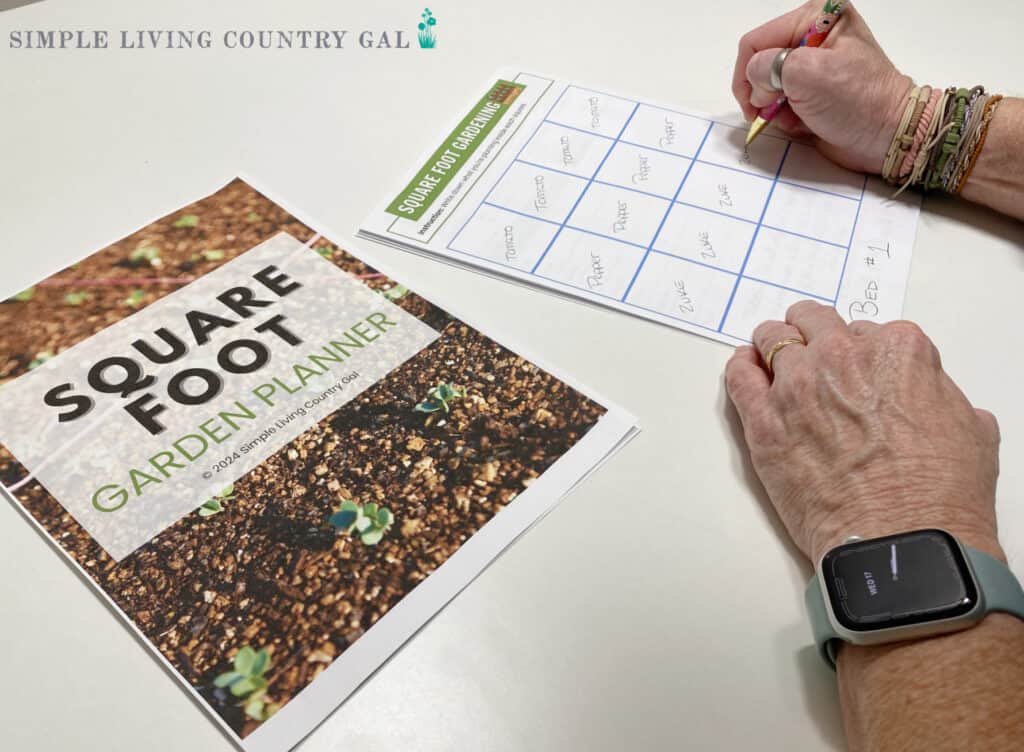
Learn how to rotate crops so you can keep your garden healthier year after year.
#4. Purchase Seeds
If you have not done so yet purchase any seeds you need for your spring and summer garden. Make a list of seedlings you hope to get so you can start watching for sales now.
If you do not yet have a Garden Planner, now is the time to get one! Keeping notes is the main reason I have grown as a gardener. This includes any past issues with weeds, pests, and even diseases. A record of how my garden does year after year has helped me to ward off more issues in the future. If you don’t want to purchase a ready-made planner, you can use a binder or a spiral notebook instead.
#5. Planting Schedule
Having a planting schedule will ensure you get things in the ground at the best time. To make a plan for your growing area, look at the seed packets’ instructions and your local climate and use this info to create a planting schedule that compliments the hardiness zone you live in.
If there is still time, consider starting seeds indoors to give you a head start on growing. Or you can purchase seedlings for any plants that need a longer growing season than what you have available.
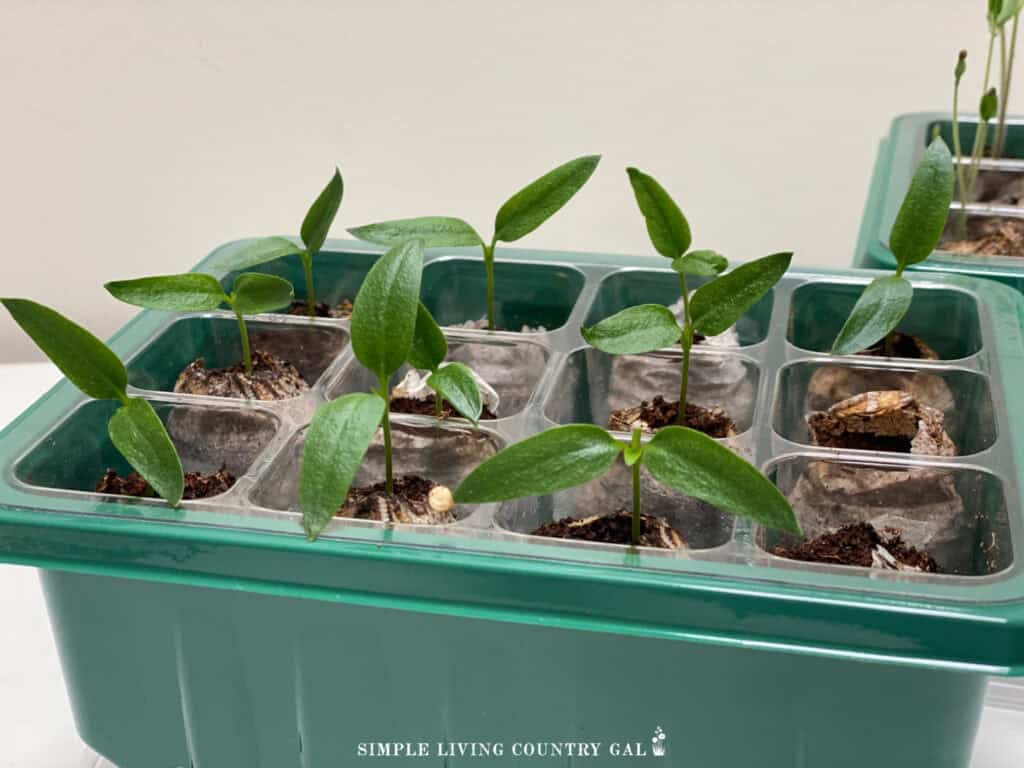
Livestock April To-Do List
Livestock care is something that needs to be done monthly. This will ensure all of your animals are healthy and robust and better able to handle this wet and sometimes chilly season.
#1. Vaccinate Livestock
April is a good time to vaccinate your livestock against potential diseases. Be sure to check with your local vet so you know what vaccinations are needed for the livestock you raise.
You will also want to keep records of any animals you raise so you can more accurately take care of them. You can have a page for each animal or keep a general record each month on its own page.
On a homestead, notes and records play an important role. Not only with livestock but with anything you grow as well.
#2. Spring Shearing
If you are raising wool-producing animals like sheep or fiber goats, spring is usually the best time for shearing. Not only will this keep the animals cool as temperatures rise, but it also provides you with wool for spinning.
#3. Check Fencing
Walking the fence line is something that should be done at least seasonally if not every month. The sooner you catch any issues in your fence the more quickly you can fix it before anything gets in or out. Inspect and repair your fencing as needed.
Winters can do damage to fences, especially electric fence netting. Walk your fence line and fix any issues as you come across them. Having a solid fence will not only keep your animals safely inside but predators out as well.
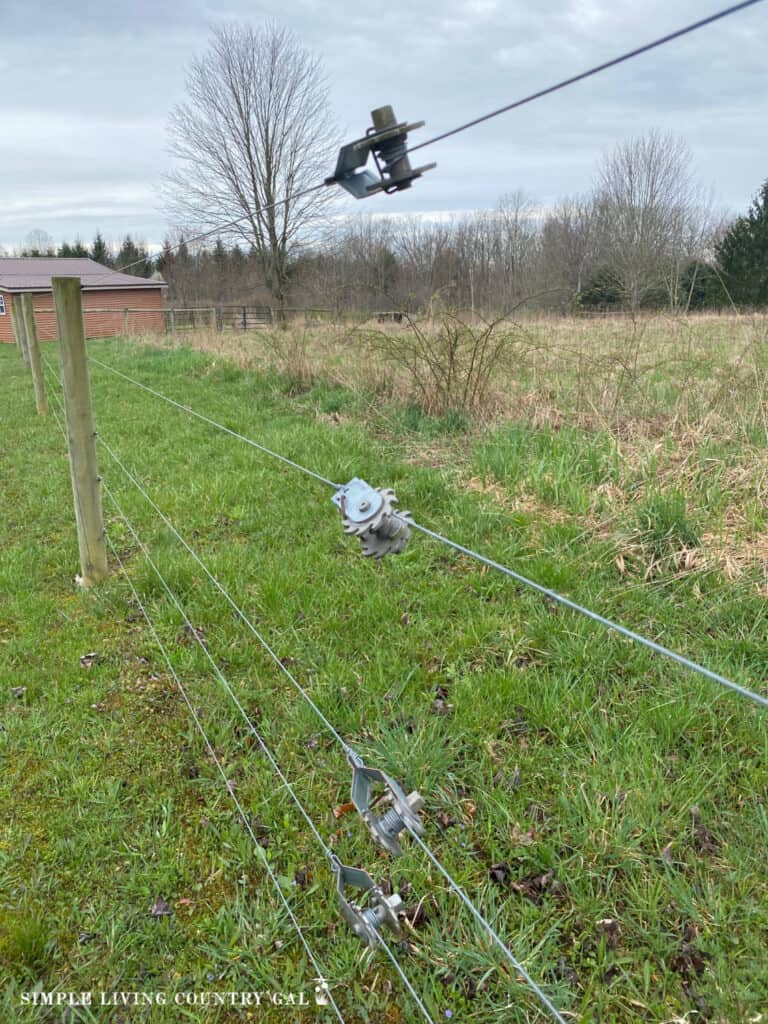
#4. Feed Adjustments
Spring means fresh green pasture, and before you give your livestock access, you will want to adjust your winter diet to a spring one. Grazers will be getting more nutrients from the fresh grass, so their need for supplemental feed might decrease.
Let animals out onto pasture slowly so their rumens have time to adjust. Again, keep records of diet changes and dates for all your animals.
#5. Parasite Control
With the warmer, wet weather, parasites start to become more active. If you do not have one, create a parasite control program to protect your livestock. You can do this using chemical dewormers or take a more natural approach using herbal options.
It is important that you do not just worm an animal. Know what is in your area, talk to local farmers to learn what they use, and contact your vet for additional advice.
Performing routine checks of inner eyelids for signs of anemia is a great routine habit with your goats and sheep. You can also do fecal testing to see if there are any signs of worms or worm eggs.
#6. Kidding
If you have a late fall/early winter breeding schedule for goats, sheep, or cows, you may have births scheduled for April. Prep birthing areas and stock your birthing kit to ensure you are ready when babies start coming.
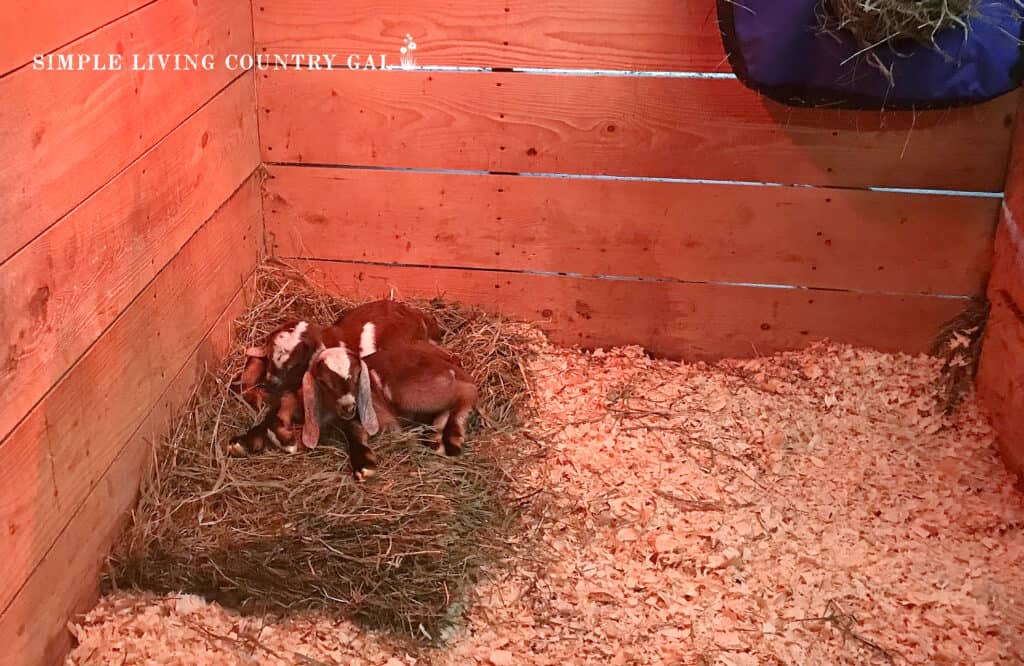
Chicken April To-Do List
I kept this separate from the livestock section mainly because many homesteaders only have backyard chickens. Hopefully, this will help you find the information you need without becoming overwhelmed.
#1. Coop Cleaning
Choose a sunny warm day to clean out your coop for spring. Find a place for your flock to scratch so you can work without distractions.
- Start by removing all bedding and thoroughly sweeping out any dust and debris from ceiling to floor.
- If you are able, remove the nesting boxes so you can clean them outside and allow them to dry in the sun.
- Next, scrub the coop’s interior with a mixture of water and a mild, non-toxic detergent.
- Be sure to clean the vents and any windows and doors.
- After cleaning, let the coop air dry completely before introducing fresh bedding.
- This is also an excellent time to inspect the coop for any needed repairs.
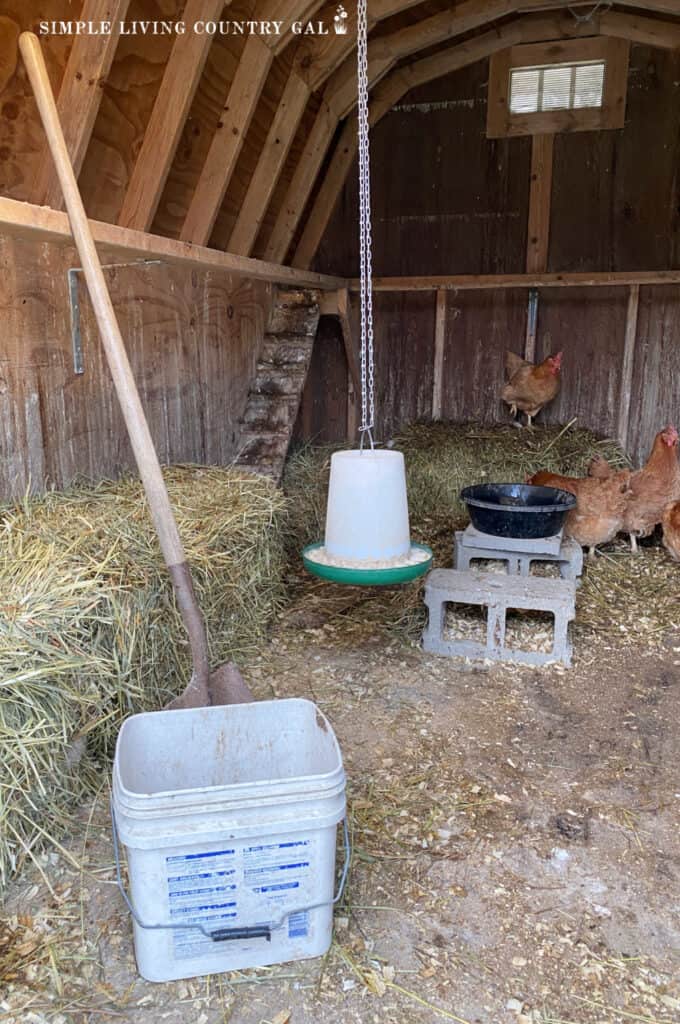
It is a good idea to routinely clean any waterers or feeders in the coop. Dirty containers can be breeding grounds for bacteria.
Here is our routine:
- Daily – Dump all waterers, rinse, and refill with fresh water.
- Weekly – Wipe clean all waterers to remove any buildup.
- Monthly – Completely wash all containers and rinse thoroughly.
#2. Flock Care
April is a good time to thoroughly check your flock to see how they fared over the winter. Feathers can mask health issues, so be sure to pick up every chicken and feel their body condition. A few symptoms to watch for are:
- Lack of appetite
- Lethargy
- Changes in droppings
- Unexplained loss of feathers
Treat any issues you see as they come up, and update notes on each chicken.
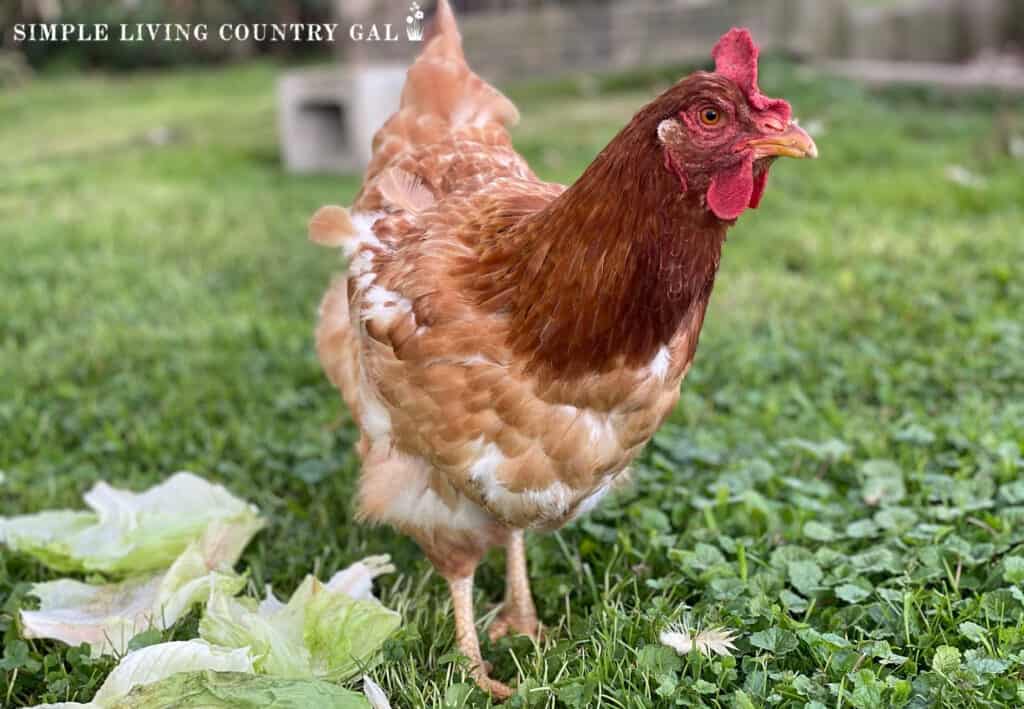
Check the diet you are feeding your flock and make any adjustments now that the weather is warming up.
Regular care and maintenance of your flock can ensure their health and productivity, contributing significantly to your homesteading efforts.
Home and Barn April To-Do List
Next up are the home and barn areas. These areas can get beat up a bit over the winter, and a spring walk around and through will help you to see any issues that need your attention.
#1. Look for Any Winter Damage
Begin by walking the exterior of your home and barn and look for any signs of winter damage. This includes checking the roof for any missing or damaged shingles and looking at the siding for cracks or peeling paint. Also, ensure that you walk around the entire property, paying close attention to fences, gates, and outdoor structures like sheds or greenhouses for damage caused by snow, ice, or wind.
For the barn, pay close attention to the doors and windows to ensure they are still secure and weatherproof. It’s important to tackle any repairs as you find them to prevent further damage. If you can’t get to them now, make a note in your planner so any issues are dealt with before next winter hits.
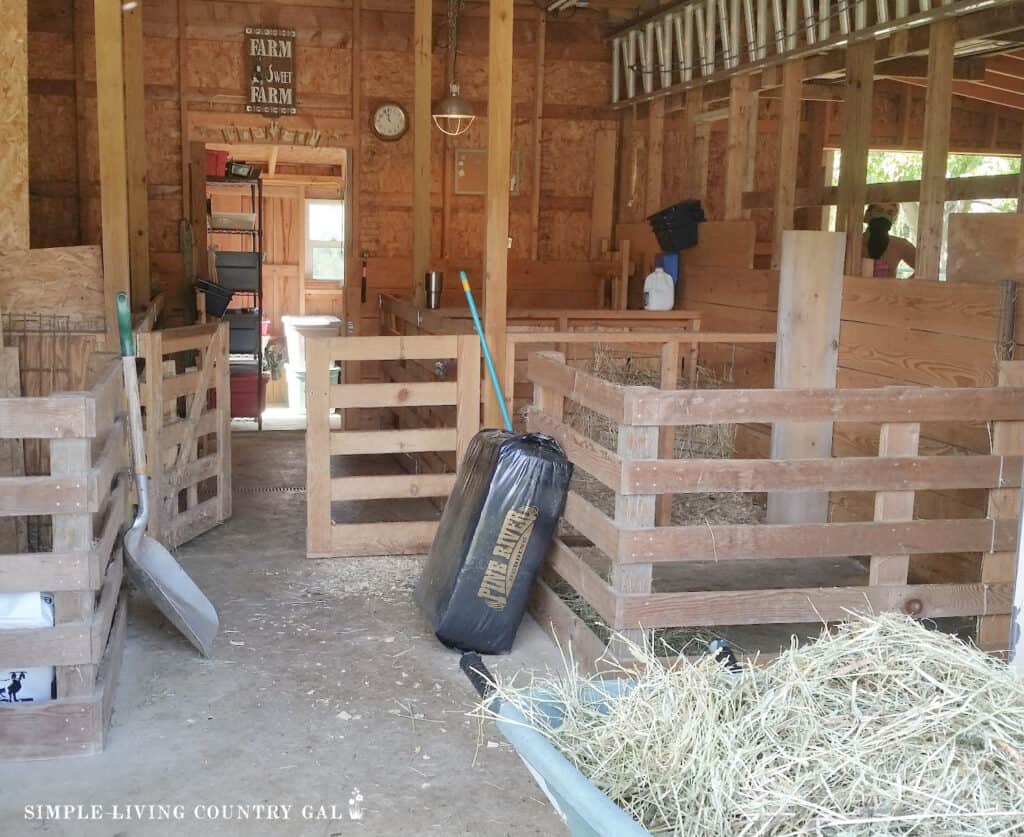
#2. Cleaning and repair of tools and equipment
Give your tools and equipment a thorough cleaning and maintenance check. For tools, use a wire brush to remove rust and dirt from metal surfaces and apply a light coating of oil to prevent future rusting. Check for loose handles on tools and tighten them as necessary.
For equipment such as rototillers, tractors, lawnmowers, or chainsaws, ensure they are in working condition. Check the batteries, replace spark plugs, clean filters, and check chains and belts for wear and tear. Always refer to your equipment’s user manual for specific maintenance instructions.
Remember, well-maintained tools and equipment not only last longer but also make your work more efficient and safe.
#3. LIvestock Barn Cleaning
Barn cleaning is one of those chores that requires all hands on deck. Before doing this project be sure to enlist your family for help.
- Remove any old bedding.
- Wash and clean any feeders and waterers.
- Clean the walls from ceiling to floor.
- Inspect the windows and doors as you are cleaning.
- Add food grade Diatomaceous Earth to help with odors and pests.
- Put a layer of fresh bedding down.
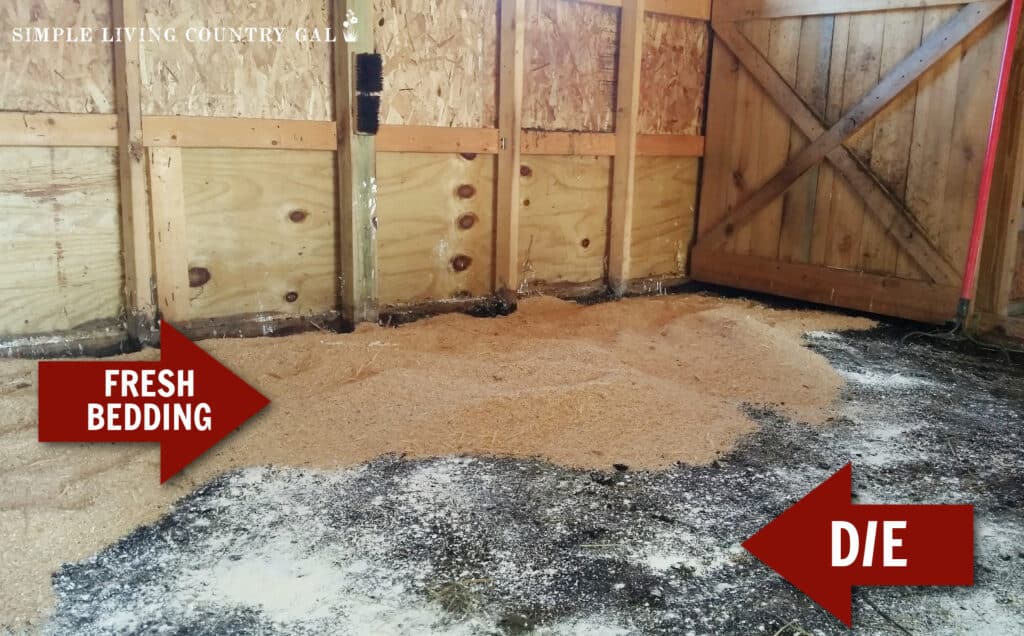
#4. Preparation of firewood for the next winter
Even though the weather is still cold, it’s never too early to start stocking up on firewood. Where we live, this is an ongoing chore that constantly needs to be done so we do not fall behind. Make a goal to work on wood each month until winter returns.
When selecting firewood, hardwood varieties such as oak, maple, or ash are best for burning, as they provide more heat and burn longer. It is best to cut, split, and stack your firewood in a dry, sunny area to promote drying. Cover the top of the woodpile to protect it from rain and snow, but leave the sides open for airflow, which is essential for drying.
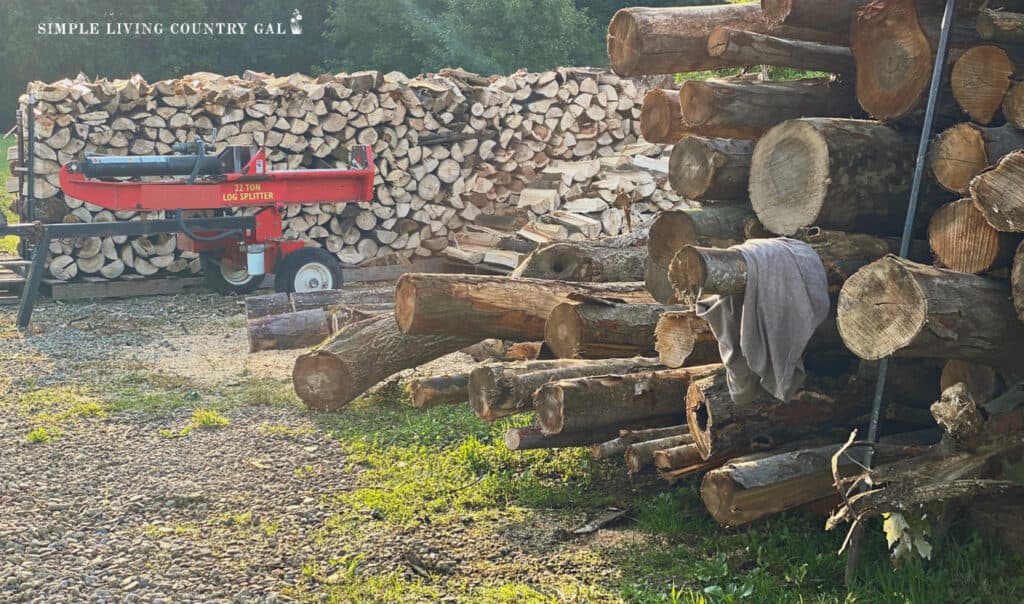
Having a plan will help you stay on track with your garden, livestock, and property without getting overwhelmed. Bookmark this homesteading April to-do list and refer to it each year for an efficient and thriving homestead.
